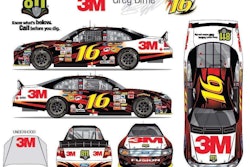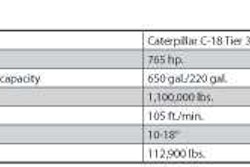America’s rural heartland is home to nearly 50 million people and its natural resources provide the primary source of the energy, food and fiber that supports the nation’s economy and way of life.
But, according to a new report from TRIP, the roads and bridges that serve and connect the nation’s rural areas face a number of significant challenges, including inadequate capacity to handle the growing levels of traffic and commerce, limited connectivity, the inability to accommodate growing freight travel, deteriorated road and bridge conditions, a lack of desirable safety features, and a traffic fatality rate far higher than all other roads and highways.
The report, “Rural Connections: Challenges and Opportunities in America’s Heartland,” was released on Sept. 1 by TRIP. It defines Rural America as all places and people living outside the primary daily commuting zones of cities with 50,000 people or more.
The TRIP (a national non-profit transportation research group based in Washington, D.C.) report found that despite a recent decrease in the overall fatality rate on the nation’s roads, traffic crashes and fatalities on rural roads remain disproportionately high, occurring at a rate more than three times higher than all other roads. In 2009, non-Interstate rural roads had a traffic fatality rate of 2.31 deaths for every 100 million vehicle miles of travel, compared to a fatality rate on all other roads of 0.75 deaths per 100 million vehicle miles of travel.
And although they carry only 25 percent of all vehicle miles of travel in the U.S., crashes on the nation’s rural, non-Interstate routes resulted in 51 percent of the nation’s 33,808 traffic deaths in 2009. Inadequate roadway safety design, longer emergency vehicle response times and the higher speeds traveled on rural roads are factors in the higher traffic fatality rate.
In addition to disproportionately high traffic fatality rates, the roads and bridges in rural America have significant deficiencies.
In 2008, 12 percent of the nation’s major rural roads were rated in poor condition and another 43 percent were rated in mediocre or fair condition. In 2010, 13 percent of the nation’s rural bridges were rated as structurally deficient and 10 percent were functionally obsolete.
“The safety and quality of life in America’s small communities and rural areas and the health of the nation’s economy ride on our rural transportation system,” said Will Wilkins, executive director of TRIP. “This backbone of the heartland allows mobility and connectivity for millions of rural Americans and provides crucial links from farm to market, moves manufactured and energy products, and provides access to countless tourist and recreational destinations.
But, with long-term federal transportation legislation stuck in political gridlock in Washington, America’s rural communities and economies could face even higher unemployment and decline. Funding the modernization of our rural transportation system will create jobs and help ensure long-term economic development and quality of life in rural America.”
“Congress must not delay in passing a robust, multi-year highway and transit bill in order to address the transportation challenges faced in rural America and the nation as a whole. The reauthorization of SAFETEA-LU is a key opportunity to move U.S. infrastructure into the 21st century, bolster economic recovery efforts, and improve the quality of life in every corner of our nation,” said John Horsley, executive director of the American Association of State Highway and Transportation Officials (AASHTO).
“America must adopt transportation policies that will improve rural transportation connectivity, safety and conditions to provide the nation’s small communities and rural areas with the level of safe and efficient access that will support quality of life and enhance economic productivity,” Horsley said. “This can be done, in part, by modernizing and extending key routes to accommodate personal and commercial travel, improving public transit access to rural areas, implementing needed roadway safety improvements, improving emergency response times, and adequately funding state and local transportation programs to insure sufficient preservation and maintenance of rural transportation assets.”












